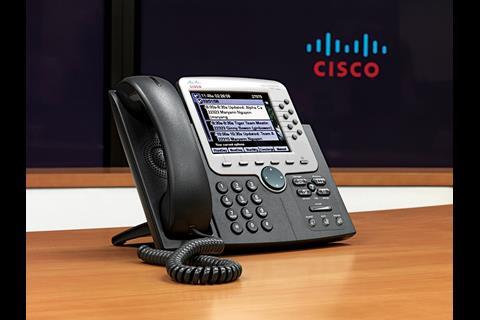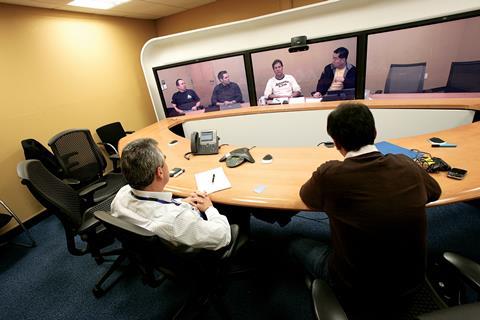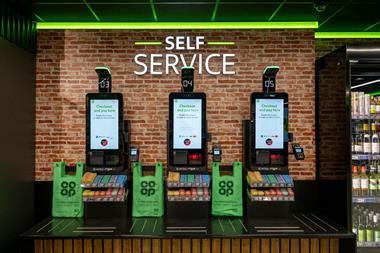For an international giant like Tesco the web is crucial for internal communication. Joanna Perry finds out how the grocer is making the most of it
Last year every retailer and their mother launched themselves on social networking platforms and add web 2.0 tools such as blogs, forums and ratings and reviews to their own websites.
And while Tesco has done much of this, it has also been heavily involved in investigating how web-based technologies could help its staff to communicate with each other, wherever they are based in the world.
As other UK retailers seek international expansion to maintain their growth, the experiences of the grocery giant in this area serve as a great example of how businesses can maintain close internal ties internationally without it costing the earth.
In Easter 2008 Tesco began using a virtual meeting platform - Cisco TelePresence - and since then has deployed a web conference system, Cisco WebEx. Its latest development in the second half of 2009 is a completely relaunched intranet, Intra 2.0, that in time will introduce collaboration tools right across the business.
Tesco worldwide head of operations development and IT Mike McNamara says: “My teams spend a lot of time travelling and TelePresence was a way of making normal work better, and looked like a great way of avoiding a whole load of travel.”
By the summer it was in use in Tesco’s offices in the UK, Hong Kong, Los Angeles and Bangalore, and since then has been added to just about all of its head offices.
The IT and finance teams are big users of the link between the UK and Tesco’s Hindustan Service Centre in Bangalore; and even Tesco’s main board committees are run over the TelePresence system. Demand to use the system outstrips supply.
“It is as far away from video conferencing as real life is from video conferencing,” McNamara says, explaining that it really is like being sat on the other side of a table to someone - with the high-definition video and audio meaning you pick up the nuances of face-to-face communication.
“From a personal point of view it makes a big difference to me,” he adds. “When you fly out to Asia for a week you have two and a half days of travel, you give up two weekends and you are tired all the time.”
Long-haul travel has been cut in half for McNamara’s department. The cost of travel for the UK IT, group IT and international operations development teams has been cut 45% year-on-year. He says that the reduced travel costs justifies the cost of the system even without trying to quantify the productivity benefits.
Most of the TelePresence units are in special suites at the moment. McNamara admits that high-quality, desk-to-desk video is in the not too distant future, and he feels the cost of it will fall in the next year, so he could see Tesco wanting to make use of it.
Across the world
Cisco WebEx, a web conferencing platform, allows users to collaborate and share information with their colleagues anywhere in the world. Staff can use this at their desks, so it is more scalable and cost effective for a greater number of users, allowing them to do things such as sharing their desktops with others, and giving control of it to other people.
Cisco ran a three-month pilot of WebEx with 40 users, who estimated that it saved them an average of two hours a week. Some 97% in the pilot had shared documents using the platform, 56% had passed control of their desktop to others, and 44% had shared live systems and business applications with their colleagues.
Nearly all of those who took part in the trial also agreed that the WebEx platform had improved the quality of their meetings and helped them understand subjects better.
But Tesco still felt that there was more it could do, so it began to work with Cisco to look at how it could introduce collaboration tools to its intranet.
Tesco set up a project team to develop three web 2.0 collaboration tools - a discussion forum, blogs and a wiki (web pages where content can be freely edited by anyone) - and set up a three-month pilot to evaluate how many people might use the tools and what benefits they would bring.
Discussion forums and blogs were used the most - for instance, 520 people took part in discussion forums on 78 topics.
McNamara explains how these tools differ from the TelePresence platform: “They are not co-dependent and serve a very different purpose. Wikis and blogs are for many-to-many type relationships. I’ve been able to participate in discussions that I would not normally participate in.” For instance, Tesco has run an innovation competition among staff in its Bangalore facility that McNamara has been able to participate in.
He says: “I can have short chats with a lot of people through the intranet in a way I couldn’t before.”
Four core business areas were identified that could particularly benefit from the collaboration tools that the newly developed Intra 2.0 intranet platform would deliver: trade planning; space, range and display (SRD); innovation and promotions.
In the autumn of 2009, Tesco launched the first sub-sites of Intra 2.0 with more sub-sites launching in the following month. McNamara says that the four chosen business areas could easily have been 14, and part of the work has been to contain the flood of enthusiasm for using the platform.
Cisco has run a series of workshops with Tesco employees from the four business areas; with the end goal of embedding collaboration tools in specific business processes - while making them easy to use - without changing the Tesco operating model.
Opportunities for collaboration have also been grouped into four areas - innovation, decision making, knowledge sharing and operational excellence. For instance, trade planning and SRD are best suited to the knowledge-sharing process, while promotions is linked to decision making and operational excellence.
Innovation has been kept separate as it is both a core business area and a process. A forum could be used to allow discussion of innovation ideas. From here, Intra 2.0 could allow employees to track the progress of ideas, and the TelePresence and WebEx platforms can then be used by the steering group tasked with selecting and developing the ideas with most potential.
“Corporate websites tend to be about pushing out fairly static content and classified ads. Because this is more interactive and inclusive I think it has a big role to play… particularly in the international business,” he says.
McNamara gives the example of the intranet being used to collaborate on re-merchandising plans. Creating plans that make it easier for customers to shop will be similar or the same whatever the country the stores are located in. So a dairy products merchandiser could find it helpful to get tips from their peers in other countries.
For collaboration like this, video could be used in the future. McNamara says: “Look at YouTube - what it has proven is that people will watch short clips of not that high quality video.”
For the web 2.0-type tools most people need no training, but Tesco does need someone to administer the main team sites. This just requires half a day’s trading. “We are not trying to teach anyone anything new. Facebook and Google have made that almost second nature,” he says.
And these initiatives should not be viewed as completely separate from how Tesco could communicate externally in the future. McNamara says that both customers and suppliers could be reached out to this way. In a few years’ time “the whole collaboration mindset will be different than today,” he adds.
For now not only are these technologies allowing Tesco staff to communicate more effectively, and more productively, but they are contributing to the business goals of saving money and reducing its carbon footprint too.
Using web 2.0
80% to 90%: Utilisation rates for TelePresence system
2 hours: Time saved per WebEx user each week in Tesco pilot
78: Topics discussed by 520 people in three-month pilot of discussion forums
45%: Reduction in long-haul travel costs in Tesco’s IT and international operations development teams





























No comments yet